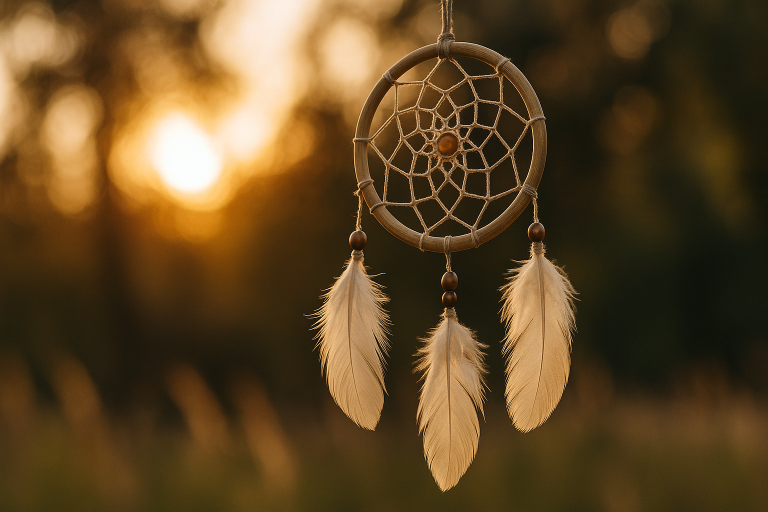Dreamcatchers have fascinated people for centuries. Known as powerful symbols of protection, they are believed to keep nightmares away and promote restful sleep. Today, a Dreamcatcher is not only a spiritual companion but also a popular home décor item. This article explores their origin, deep symbolism and how to use a Dreamcatcher in a modern home.
Origin and History of the Dreamcatcher
The Dreamcatcher originates from Native American tribes, especially the Ojibwa (Chippewa) and Lakota. Traditionally, it was made from a willow hoop strung with natural fibers to form a delicate web.
According to legend, the Spider Woman Asibikaashi protected the people by weaving a magical net that caught bad dreams. Good dreams slipped gently through the hole in the center and reached the sleeper, while bad dreams were trapped and disappeared with the first rays of the morning sun.
Early Dreamcatchers were hung above children’s sleeping areas to safeguard them during the night and bring peaceful dreams.
Symbolism and Spiritual Meaning
A traditional Dreamcatcher is made of three main elements: ring, web and feathers. Each carries its own spiritual meaning:
- Thering represents the circle of life and the interconnectedness of all
- Theweb symbolizes the path of life, capturing negative energies or
- Thefeathers guide good dreams gently down to the sleeper and stand for freedom and lightness.
Many Dreamcatchers are decorated with beads, stones or charms, each adding personal wishes, protection or spiritual strength. Because of this rich symbolism, a Dreamcatcher is far more than a decorative object—it is a reminder of nature’s wisdom and spiritual connection.
Dreamcatcher as a Protective Amulet for Restful Sleep
The core idea of a Dreamcatcher is to filter out negative dreams and thoughts. Traditionally, it is hung above the bed or cradle, where it can move freely. This allows the morning sunlight to dissolve any trapped nightmares.
Many people feel that a Dreamcatcher not only promotes better sleep but also creates a calm, balanced atmosphere in the bedroom. Whether one believes in its spiritual power or simply enjoys its presence, the positive effect on well- being is undeniable.
Modern Uses and Interior Decoration
Today, Dreamcatchers come in a wide variety of shapes, colors and materials. In addition to the classic natural styles made of wood, leather and feathers, modern versions use metal, cotton or recycled fibers. This makes it easy to integrate a Dreamcatcher into different home designs, from boho chic to minimalism.
Popular placements include:
- Abovethe bed or in a child’s nursery, keeping the traditional protective
- Inthe living room or hallway, where it brings a serene, welcoming
- Asoutdoor décor on a porch or balcony, where it dances beautifully in the breeze.
Creating your own Dreamcatcher is also a meaningful option. DIY projects and workshops let you infuse the design with personal energy and intention. As a handmade gift, a Dreamcatcher expresses care and positive wishes.
Tips for Choosing and Caring for a Dreamcatcher
When buying or making a Dreamcatcher, look for natural, high-quality materials and handcrafted designs. This not only honors the tradition but also ensures each piece is unique.
For maintenance, simply dust it gently and occasionally let it soak up sunlight to refresh its energy. If the web loosens over time, it can easily be tightened to preserve its beautiful shape and purpose.
Conclusion: More Than Just Décor
A Dreamcatcher is symbol, protection and artwork all in one. It unites ancient wisdom with modern aesthetics and brings a special atmosphere to any space. Whether you believe in its spiritual energy or simply appreciate its unique look, the Dreamcatcher remains a powerful emblem of positive energy, peaceful dreams and harmony.


Comments are closed.